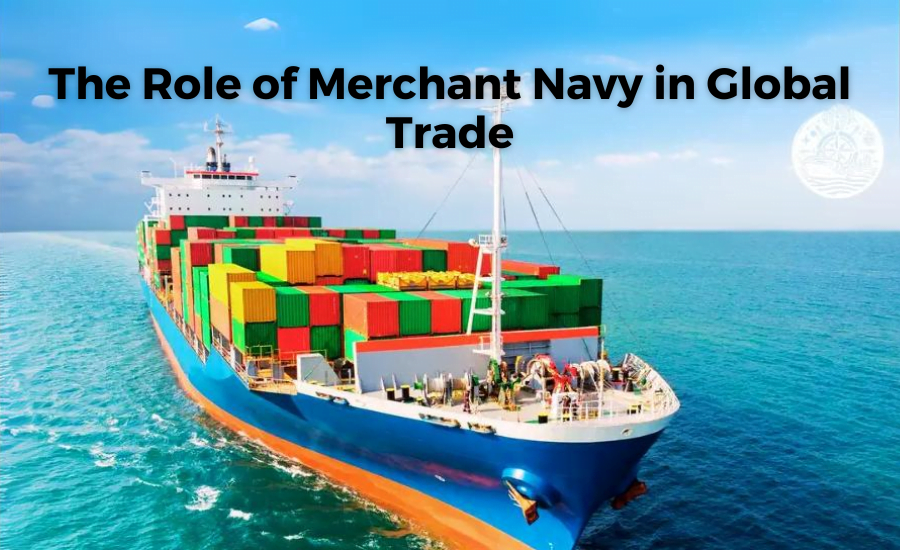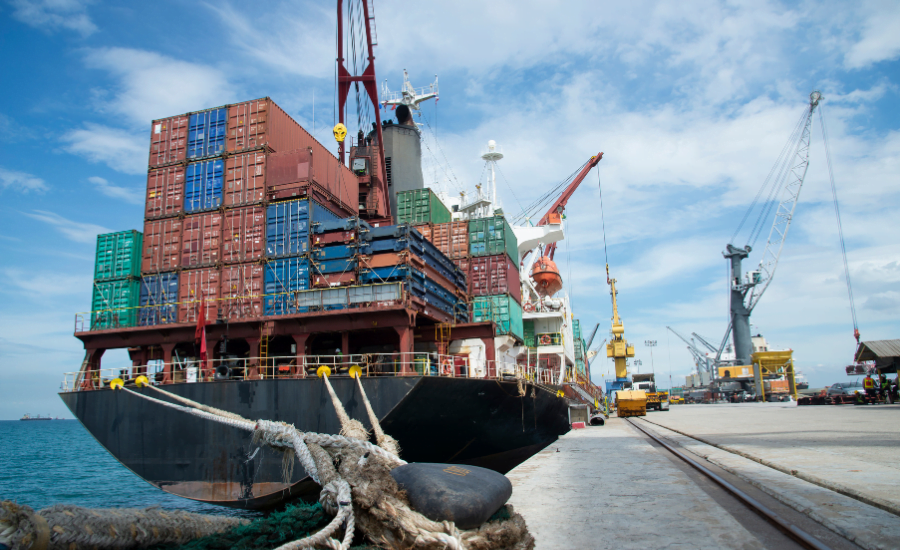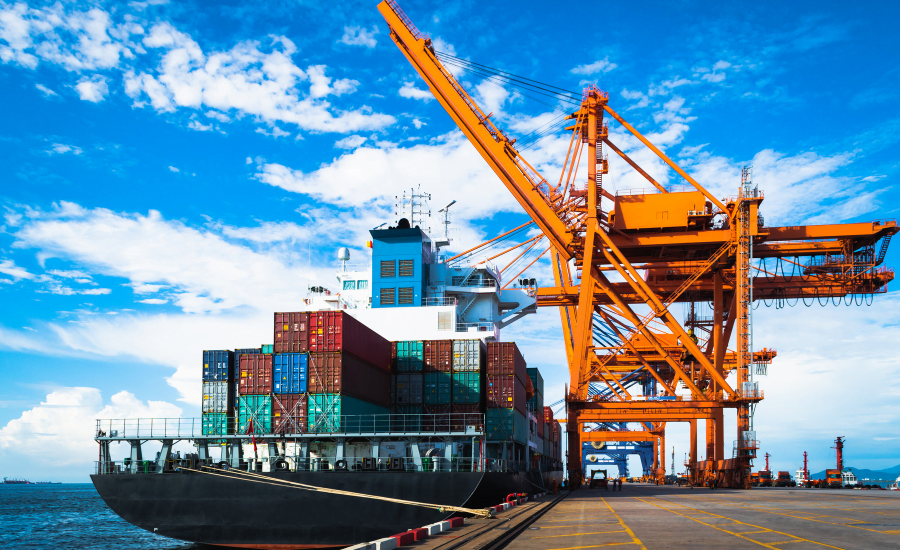
Comprised of merchant ships and their crews, merchant ships played a vital role in facilitating global trade and commerce. Merchant shipping economics has a significant impact on many aspects of international trade. Here are some key points that highlight the economic importance of the Merchant Navy.
World Trade And Transportation:
Merchant Navy ships are responsible for transporting most goods across the world’s oceans. This enables the transportation of raw materials, finished products, and energy resources, supporting global supply chains and ensuring the availability of goods in various markets. Without merchant ships, international trade would be severely restricted, and economic growth and development would be hampered.
Access To Resources:
Merchant Navy ships facilitate access to vital resources from different regions. This enables the transportation of raw materials such as oil, natural gas, minerals, agricultural products, and industrial products, ensuring their availability in different countries. Access to this resource helps stimulate economic activity and drive industrial production and consumption around the world.
Employment And Economic Growth:
Merchant Navy shipping creates employment opportunities for a significant number of people around the world. Seafarers, shipyards, longshore workers, and individuals working in ancillary services contribute to the global maritime industry. The economic impact extends beyond those directly employed, as the industry generates economic activity and supports related sectors such as logistics, shipbuilding, marine engineering, and marine tourism.
Contribution To The National Economy:

Merchant Navy ships play an important role in the economic prosperity of countries with strong maritime sectors. Countries that rely heavily on maritime trade benefit from the revenues generated by shipping companies, port operations, and related maritime services. The industry’s contribution to tax revenue, foreign exchange earnings, and economic growth is particularly significant for maritime nations and port cities.
Price Stability And Market Efficiency:
The efficiency and affordability of maritime transport enabled by merchant shipping contribute to price stability and market efficiency. By transporting large quantities of goods over long distances, the industry reduces transportation costs and helps make products more affordable for consumers. This efficiency also allows markets to function smoothly, giving companies access to a wide range of suppliers and customers around the world.
Economic Resilience And Risk Mitigation:
Merchant Navy shipping provides alternative transport routes and options, contributing to economic resilience and risk mitigation. Disruptions in one region or one mode of transport do not have a severe impact on global trade, as transport routes and carriers are different. This resilience helps reduce risks associated with geopolitical tensions, natural disasters, and other unexpected events.
Maritime Services And Infrastructure Development:
Merchant Navy Marine promotes investment in maritime services and infrastructure development. Ports, terminals, aids to navigation, and maritime support facilities are being built and modernized to meet the demands of international trade. These investments create jobs, attract businesses and stimulate economic activity in port cities and coastal areas.
Technological Advancement And Innovation:
Merchant Navy Marine Economics drives technological advancement and innovation in the maritime industry. To remain competitive, shipping companies are investing in efficient vessels, digital technology, and sustainable practices. These innovations improve operational efficiency, reduce fuel consumption, and minimize environmental impact, reducing costs and increasing sustainability. The merchant shipping economy is closely intertwined with global trade. It enables the movement of goods and access to resources, creates jobs, contributes to the national economy, ensures price stability and promotes economic resilience. Industry efficiency, affordability, and technological advancement are essential to supporting international trade, promoting economic growth, and maintaining global economic interdependence.
Merchant Navy: How Will Transportation Markets Interact With Global Goods Trade Markets?

Uneven national recoveries and changes in product demand, as countries emerge from pandemic lockdowns, will result in increased demand for both raw materials and manufactured goods. Transportation costs have increased significantly. Billions of dollars in trade delays caused by both the blockage of the Suez Canal by the giant ship Ever Given and transport supply shortages caused by the late stages of the COVID-19 pandemic underscore the importance the transport sector plays in global trade.
Reminding the world of its role. Although the role of transportation remains somewhat invisible in a more general context, new research shows that the market for transportation services is influenced by trade flows, the products’ countries sell abroad, and how price shocks are reflected in trade. We are clarifying the impact that this may have on the shipping services market, which can influence trade flows, the products countries sell, and the impact of price shocks on trade.
Merchant Navy Facts:
Ships transport more than 80% of the world’s trade volume and approximately 70% of the trade value. The world’s vessels that handle maritime trade include dry bulkers, container ships, and oil tankers. Each type of vessel specializes in a different class of product and can be divided into two categories: vessels that operate on fixed routes, such as buses, and vessels that operate on flexible routes, such as taxis. The first group includes container ships, and the second group includes gas/oil tankers and bulk cargo ships. Dry bulkers account for around half of the seaborne trade and 45% of the world’s total fleet and are the primary means of transporting goods such as grain, ore and coal.
They are called “sea taxis” because they operate on flexible routes. Four thousand four hundred forty-four shipping companies influence transportation costs and, in turn, global imports and exports. In a new study, Giulia Brancaccio, Theodore Papagiorgio, and I focus on the dry bulk shipping industry, using data such as ship AIS data that shows each ship’s exact location and depth of submergence, as well as ship contracts. I used it. This allowed us to observe the interface between transport markets and global trade. The established patterns we have observed determine how certain changes in economic conditions, such as rising oil prices or a sharp slowdown in a major country’s economy like China, affect shipping prices and trade flows. I was also able to predict. Although our study focused on dry bulk cargo, the results also apply to other types of transportation.
Merchant Navy: World Trade In Raw Materials Is Highly Unbalanced:

Many countries are either large net importers or large net exporters. This is reflected in transportation costs and ship movements. This imbalance is mainly due to differences in the natural heritage of each country. For example, Australia, Brazil, and the northwestern United States. (The world’s largest net exporters of raw materials) are rich in goods such as minerals, grains, and coal. On the other hand, growing developing countries need to import raw materials for industrial expansion and infrastructure development. In recent years, China’s growth has relied on large quantities of raw material imports. Because of this large trade imbalance, our research shows that a staggering 42% of ships are sailing. Without cargo at any given time, and there is a large asymmetry in trade costs in space.
Shipping companies charge a premium for trips to destinations with low export volumes to compensate for the difficulty of finding new cargo from those destinations. All else being equal, the price is higher because you may be able to travel back and forth without paying any fares. For example, China primarily imports raw materials, so transshipment options for ships arriving in China specializing in this type of cargo are limited. Therefore, traveling from Australia to China costs an average of $10,000 per day, and traveling from China to Australia costs an average of $7,500 per day during the study period. This reflects the general point that transport prices are largely asymmetric, and differences reflect destination trade imbalances.
How Much Will Major Changes In Maritime Conditions Affect Global Trade?
As the recent blockage of the Suez Canal by the Ever Given shows. The world’s largest shipping route has a significant impact on global trade. The permanent closure of three major shipping routes (Suez, Panama, and Gibraltar) could increase range and, therefore, specific sailing times. The existence of all sea routes was found to significantly increase global trade in general. And in particular regions in particular. According to our model, the removal of the Suez Canal would reduce trade by 3.5% and by up to 26% in the Middle East. The abolition of the Panama Canal will reduce world trade by 3%. But in the northeastern United States, it will fall by up to 28%. Gibraltar is seen as the most important transit point. As its removal would reduce global trade by around 7% and by up to 44% in the Mediterranean.









